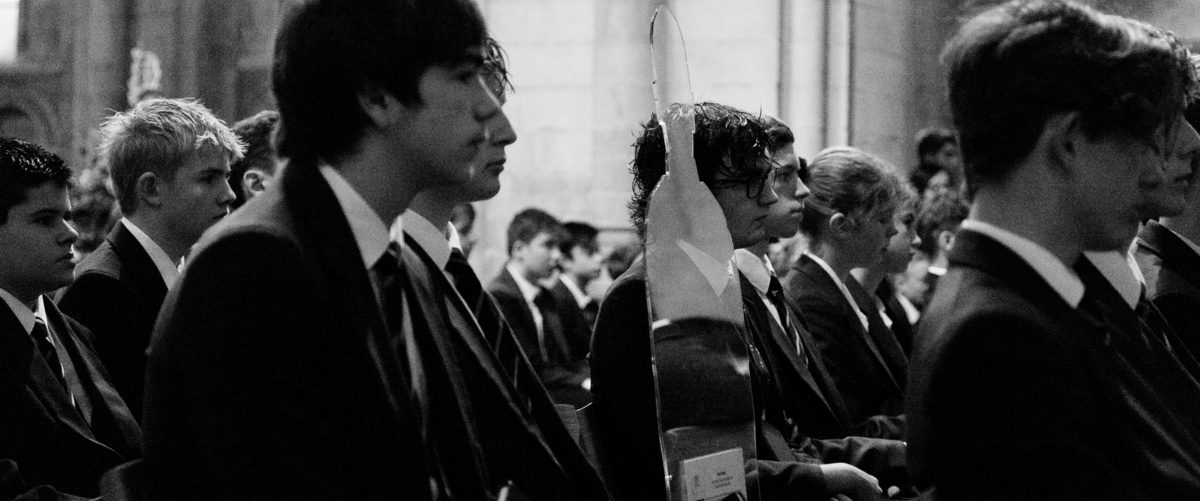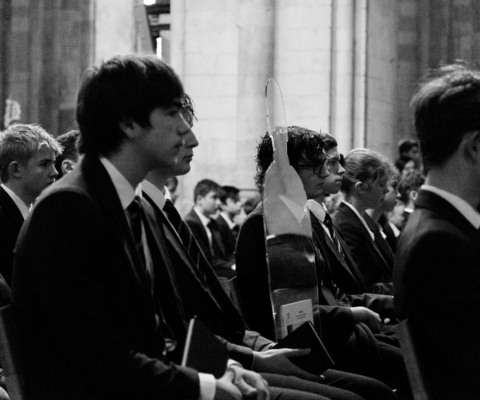As part of the school's wider Remembrance Day commemorations to mark the 100th anniversary of the end of the First World War, Norwich School has taken part in the nationwide campaign ‘There But Not There’ with silhouettes representing Norwich School Old Norvicensians who died in the war.
These silhouettes are on display in Norwich Cathedral, with each figure representing someone who had an association with either Norwich School or Norwich Cathedral. In total there are eleven soldiers who are being represented, 5 of which were Norwich School Old Norvicensians. Each of these five ONs are being commemorated in the school’s daily assembly there.
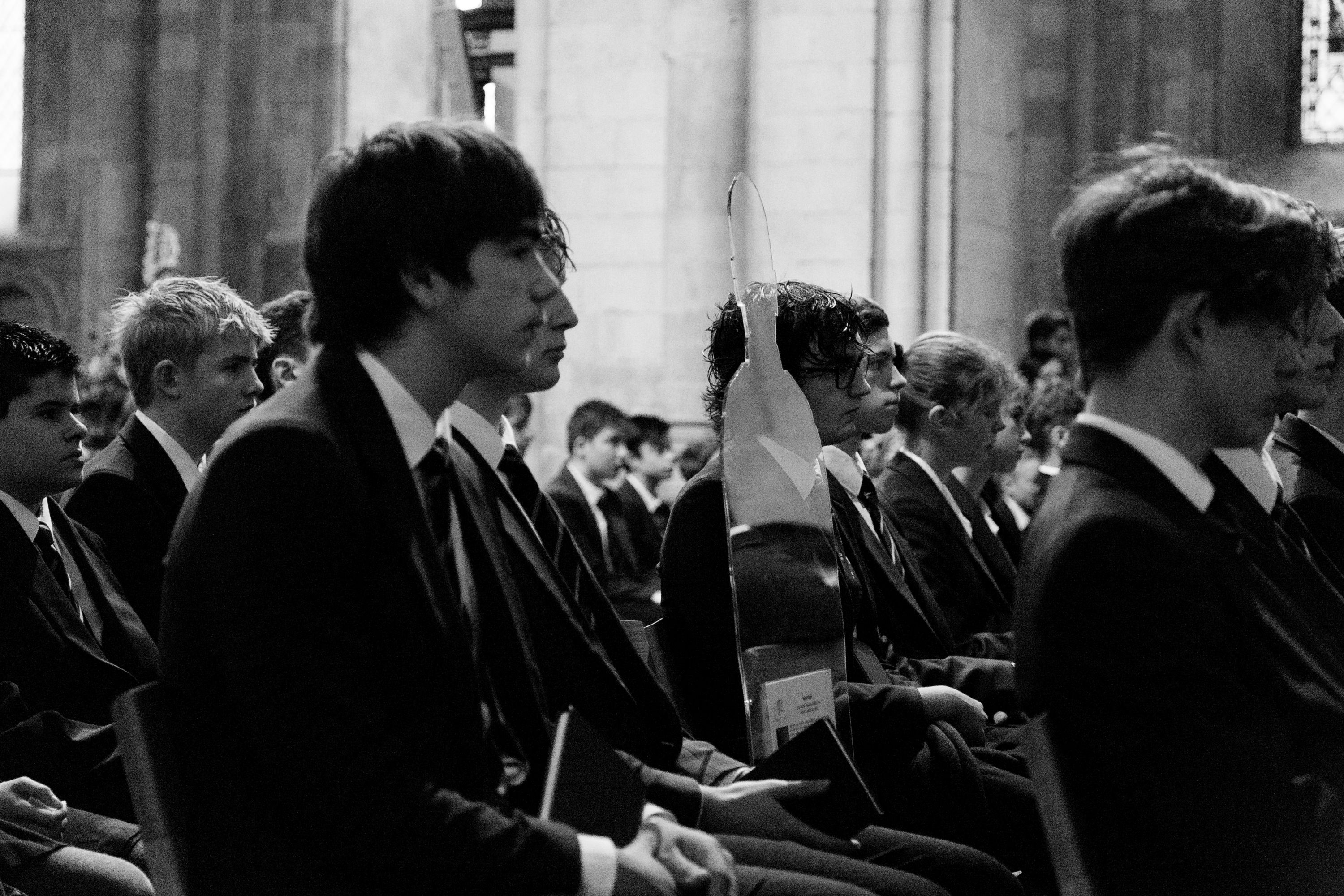
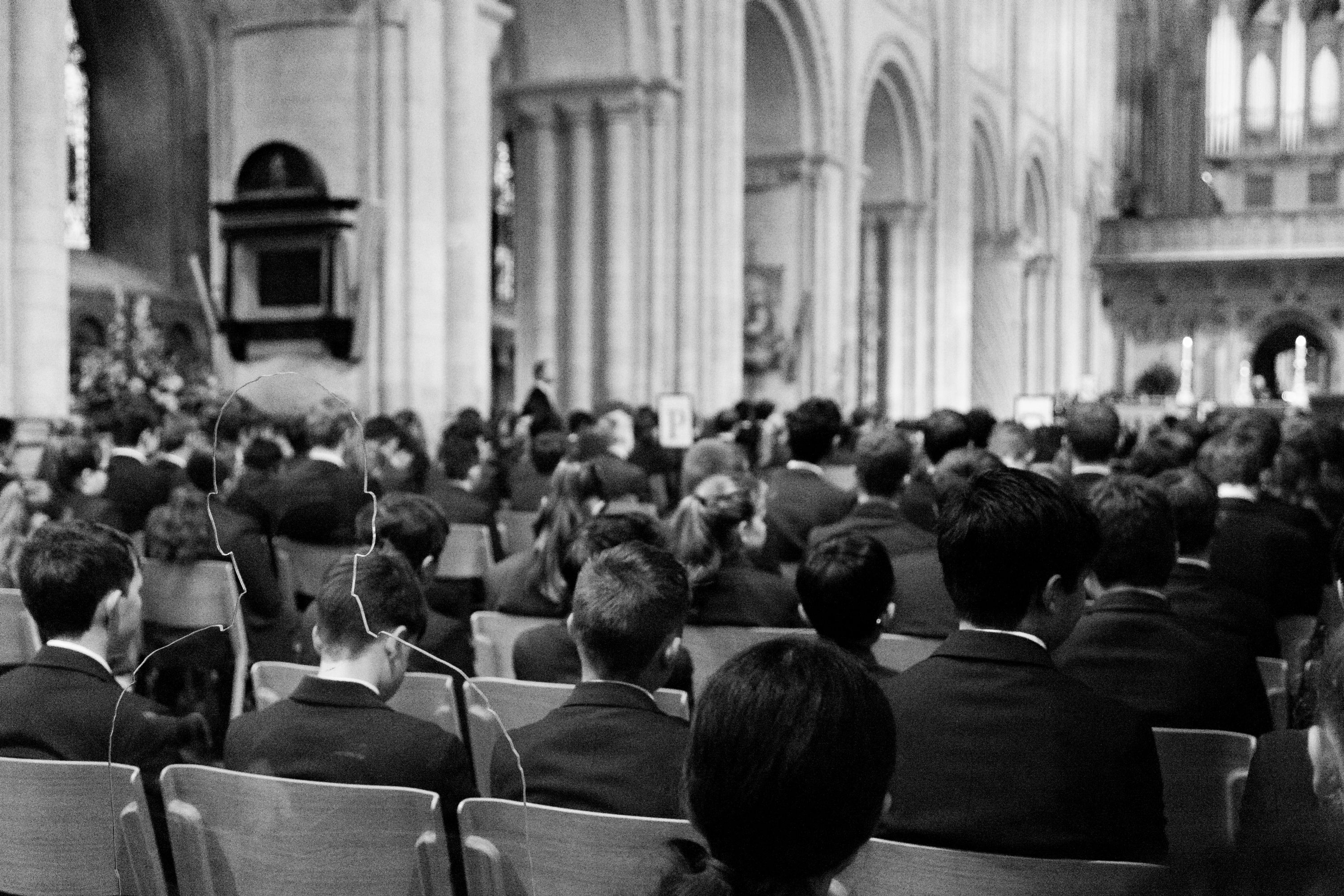
The ONs represented by the silhouettes are:
Harold Chapin (ON 1900) – Lance Corporal, Royal Army Medical Corps
An accomplished playwright and actor, Chapin was part of the Royal Army Medical Corps in the war. He died on 26th September 1915, caught in gunfire while attempting to rescue a wounded man. He is buried at the cemetery at Loos-en-Gohelle in Northern France. Harold Chapin’s story is told in Mr Webber’s play Any Sacred Thing, being performed by Norwich School pupils later this month.
William Harris (ON 1890-1894) – Lieutenant, Royal Army Medical Corps
Harris was known for both his academic ability and his kindness. He came from a family of doctors and, after studying medicine, he worked in an asylum, going out of his way to help the most unfortunate of patients. He was posted to Egypt with the medical corps but never arrived; the boat he was travelling on was hit by a torpedo and the entire crew was lost. He is remembered on the memorial plaque at Mikra Cemetery, Greece.
Leonard Hill (ON 1896-1901) – Major, Royal Field Artillery, BEF Special Reserve of Officers 162nd Brigade 23rd Division
Hill received his commission in 1915 and took part in the severe fighting of the Somme in 1916 and commanded a battery near Ypres in 1917. He was gassed twice but asked to return to the firing line. His brave actions under fire earned him the Military Cross in October 1917. He was an instructor in an Artillery School in France when he contracted pneumonia and died in hospital on 10th October 1918, aged 32. He is buried at Abbeville Communal Cemetery Extension in France.
Frederick Manners-Smith (ON 1883-1888) – Major, 2nd Battalion of the 3rd (Queen Alexandra’s Own) Gurkha Rifles
Freddie was a boarder in School Lodge and went on to attend the Royal Military College at Sandhurst after Norwich School. His first commission, obtained in 1891, was in the Gloucester Regiment, and he joined the 2nd Battalion of the 3rd Q.A.O. Gurka Rifles in 1895. He served in the North-West Frontier India Campaign (Relief of Chitral, 1895) and was awarded the Chitral Medal in January, 1902. He became a Captain in 1901 and Major in 1909. Freddie was the first ON to be killed in the war, serving as a professional soldier in the British Indian Army on the Western Front. He died on the 3rd November 1914, of wounds received in the trenches near La Bassée in the retreat from Mons. He is buried in the Béthune Town Cemetery in Northern France.
Henry Pillow (ON 1905-1910) – 2nd Lieutenant, Middlesex Regiment, 7th Squadron Royal Flying Corps
Henry Pillow was a medical student at Guy’s Hospital when war broke out. He enlisted in the Public Schools Corps and went abroad as a private in the Royal Fusiliers. He was later drafted into the Flying Corps and went to the Front in May 1917. He was killed in action on 8th August 1917, aged 22. He is buried at the Mendingham Military Cemetery in Belgium.
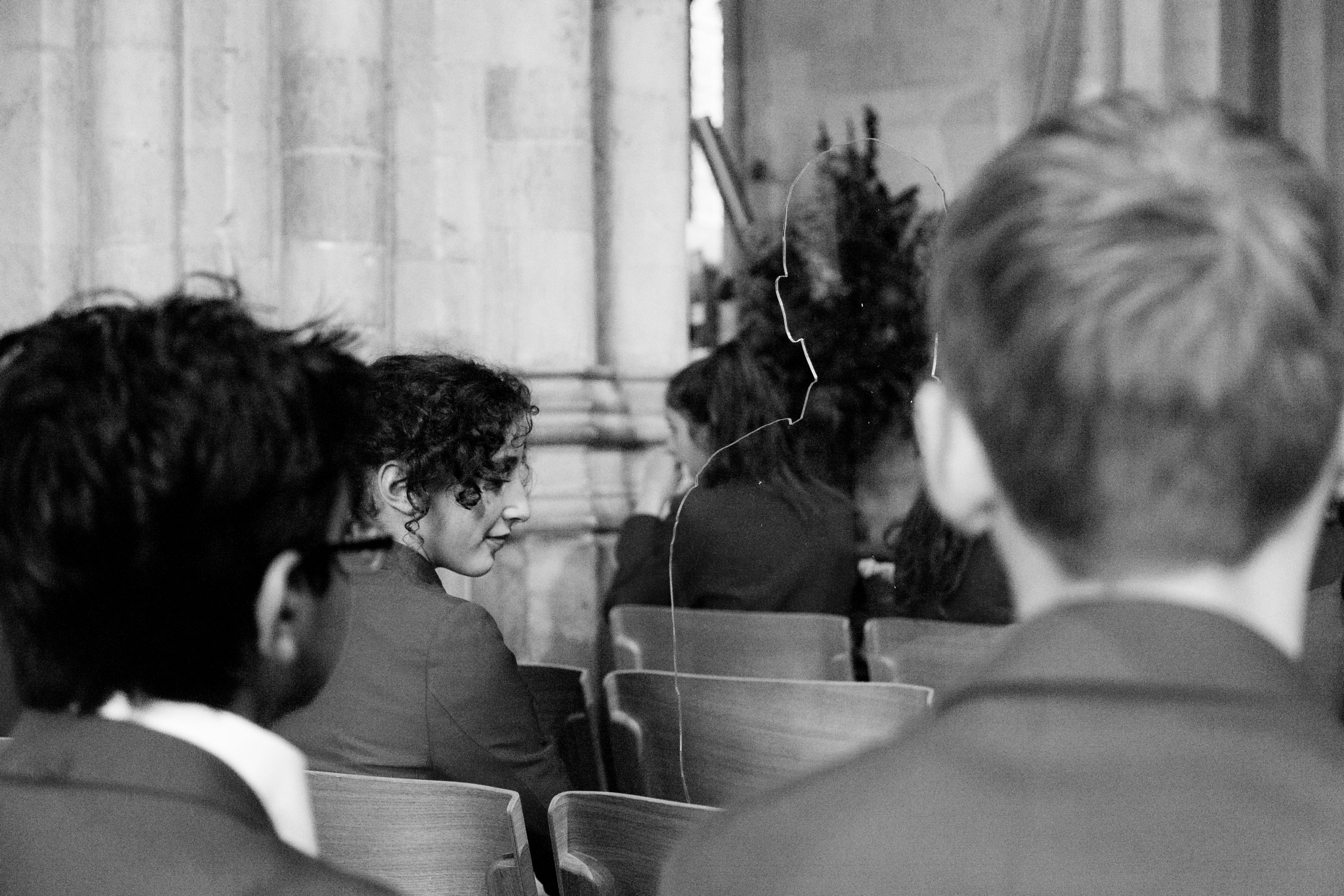
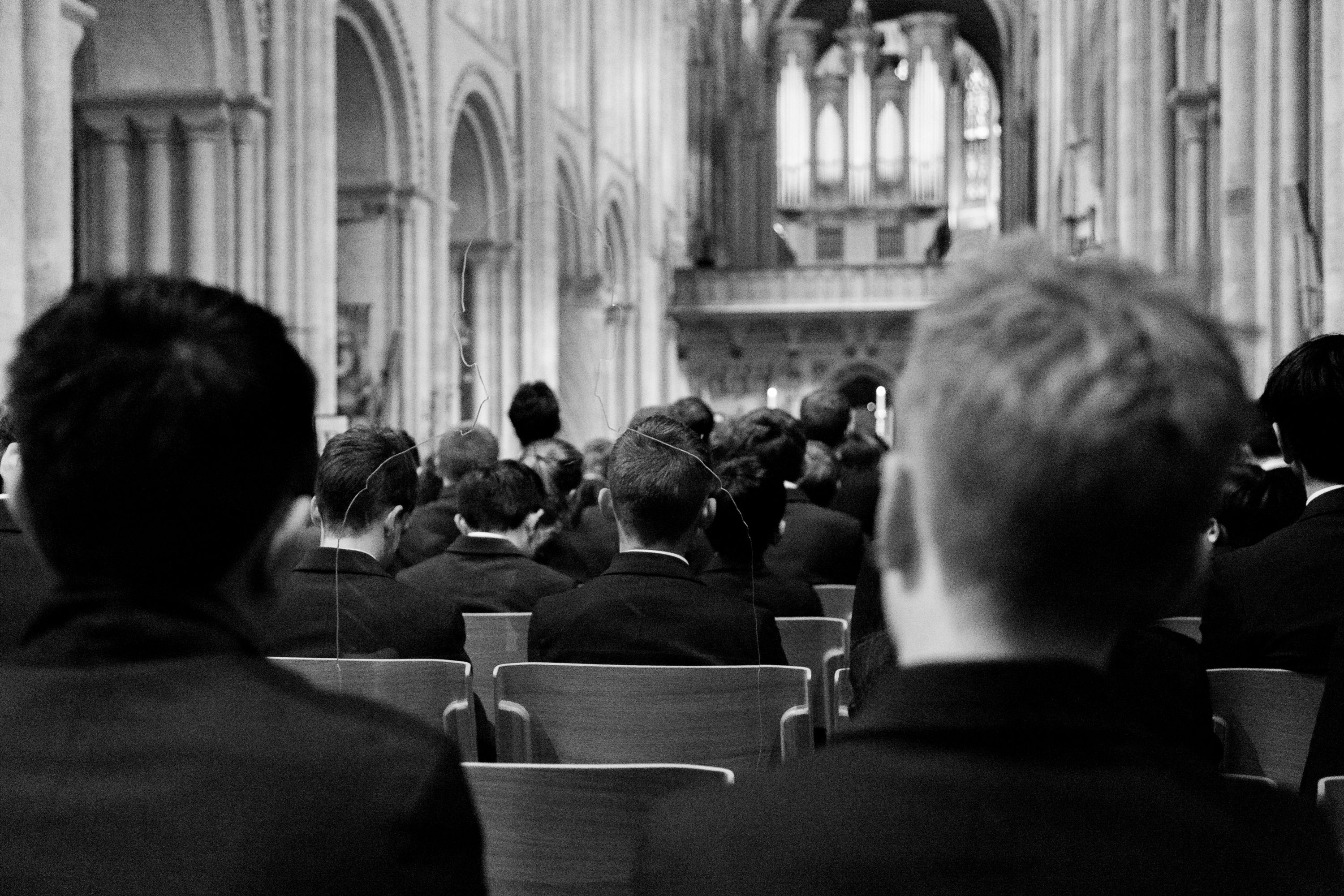
The names of the 11 soldiers represented can be found by clicking here, including a map of the Cathedral and where to find the silhouettes. A standing silhouette representing all fallen soldiers will be moved around the Cathedral, spending time next to the grave of First World War heroine Edith Cavell, the Book of Remembrance and other memorials.

